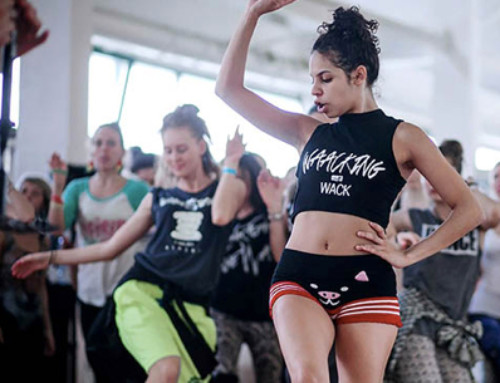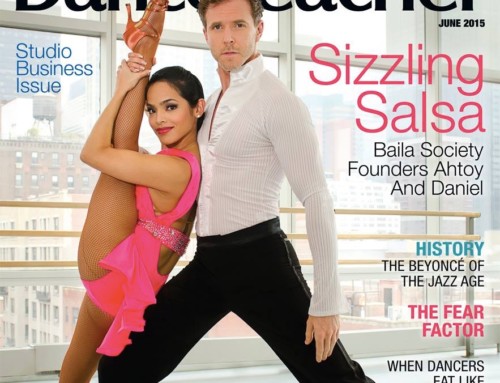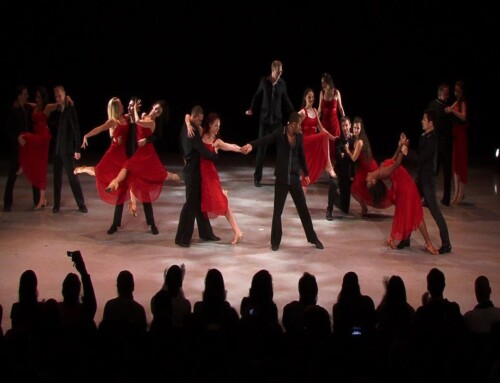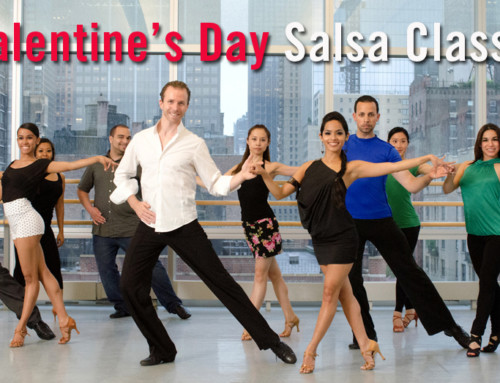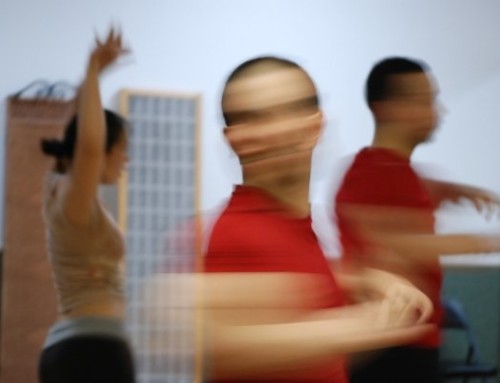WHERE FORM MEETS FUNCTION
What is styling?
The term “styling” is used to describe movement that is used to augment or embellish a more basic movement, or more literally, to describe the elements of one’s personal “style”. Interestingly, while the word “styling” is only occasionally used in this manner in other partner dance genres, such as line dancing and tango, it is a much more familiar term in salsa.
Consider the typical learning path for women in salsa: she begins in a group class consisting of both men and women, where everyone learns the same basic steps. After mastering these basics, she seeks out a “Ladies’ Styling” class, where she learns how to use her arms and body movement to make the same steps look more feminine. This perspective helps us understand why traditionally, styling classes have mostly been offered for women only and why the term “styling” is mostly understood as a feminine one.
Recently, there has been a shift in perspective concerning gender stereotypes and how they are expressed on the dance floor, thus, “styling” has taken on its more inclusive definition that is neither feminine nor masculine and can range from body and head movements; arm, leg and foot gesturing; and varied timing. Styling classes are now offered for men as well and can even borrow from other dance genres, such as Franklin Diaz’s “salsa flamenco styling” and Frankie Martinez’s “Afro-Latin Funk”.
This all-encompassing definition of “styling” represents one of the most unique and beautiful characteristics of salsa dance – the freedom of each individual to create one’s personal style, driven by the dance’s improvisational nature.
Form meets Function
Given salsa’s tendency toward variety, I’d like to offer you one such motivation for my own styling method. I use a few basic rules to determine my styling choices depending on whether I am dancing solo (“open shines”) or dancing with a partner. In salsa solo work, I believe that there should be no limits to how one interprets and expresses salsa, except for practical spacing constraints (i.e. not colliding with other couples in a crowded club).
In partner work, however, one priority supersedes all others – safety for oneself and one’s partner. As you can guess, both dancers use their complementary roles to achieve this. The leader is responsible for executing figures that can be clearly communicated and not dangerously misinterpreted. For the follower, responding to those signals must take precedence over all else. Styling must always be feasible according to each lead, which determines if, when, and how it should be used. In summary, basic styling should be dictated by its function or purpose in the figure. But ladies, do not despair! Functional styling can still be beautiful, sexy, playful, or whatever you want it to be!
My rationale for teaching styling from a functional perspective is that it’s practical and provides a simple, easy-to-remember framework for beginners that haven’t yet explored their personal styling inclination. I believe that it is important for dancers to incorporate these basic ideas into their following habits so that in the frenzy of following, the movements that ensure safety are already second nature. Remember that being safe and comfortable first allows you to enjoy this incredible dance and to discover your true style!
7 Fundamental Styling Concepts
I have provided some simple examples, below, where each styling element serves two purposes: first, to facilitate the lead while ensuring safe figure execution and second, to look feminine, according to my personal preferences. While reading through these concepts, try to think of ways you might change the styling outcome to reflect your own preferences while still making safety your first priority.

1) Raising the arm(s) whenever a figure is being led by the shoulder blades, waist, or hips, keeps you from accidentally obstructing the lead. This situation also arises during hammerlocks or wraps behind the back, where the hand being used is at waist-level. The way you develop the arm upward as well as the timing of the full extension are crucial in preventing hitting your partner, especially during a spin into a wrap. While you can also extend the arm(s) sideways, there is a greater risk of accidents happening this way, especially while first learning proper styling and partner work.
 2) Keeping the hands up at chest-level when not doing a specific gesture helps with proper contra-body motion (see point #5) and ensures that your hands are ready for any lead. I call this your “neutral position” or the default posture you will take up when nothing else is being asked of you. The time it takes to respond to overhead signals when your hands are down to your sides can be the difference between a fast and slow follower. Incidentally, this applies to leaders as well!
2) Keeping the hands up at chest-level when not doing a specific gesture helps with proper contra-body motion (see point #5) and ensures that your hands are ready for any lead. I call this your “neutral position” or the default posture you will take up when nothing else is being asked of you. The time it takes to respond to overhead signals when your hands are down to your sides can be the difference between a fast and slow follower. Incidentally, this applies to leaders as well!

3) Extending the free arm sideways during spin preparations is absolutely essential for both balance and momentum. If this isn’t possible (if both arms are being used for the lead or if the figure is a non-resistance turn), the elbows should at least stay high at chest-level (see point #4).

4) Keeping the elbows at chest-level while spinning will help improve your balance and is one of the most important components of spinning posture. Of course, once you have mastered basic spinning concepts, it is possible to spin with many different arm positions. But, moving from the neutral hand position (point #2) into a chest-level spinning position increases reaction time because the distance between the two positions is quite small. Additionally, incorporating this styling technique into your dancing will ensure that your free hand will always be up and out of the way when being led into a wrap over the front of your body.
 5)Contra-body movement, while quite natural in everyday walking, is actually one of the more complex characteristics of salsa movement. Salsa, like many African dances, is polycentric in nature, meaning that its characteristic movements originate from more than one center of the body. In its most basic form, contra-body motion improves balance for every figure in salsa. Much of salsa body movement for ladies is based on this concept and when mastered, can look both complicated and sexy.
5)Contra-body movement, while quite natural in everyday walking, is actually one of the more complex characteristics of salsa movement. Salsa, like many African dances, is polycentric in nature, meaning that its characteristic movements originate from more than one center of the body. In its most basic form, contra-body motion improves balance for every figure in salsa. Much of salsa body movement for ladies is based on this concept and when mastered, can look both complicated and sexy.
 6) Offering the hand with the palm facing down is a decidedly feminine gesture, but it also gives the leader more options in hand angles to initiate a figure. Remember that it is the leader’s job to ask for your hand with his palm facing up.
6) Offering the hand with the palm facing down is a decidedly feminine gesture, but it also gives the leader more options in hand angles to initiate a figure. Remember that it is the leader’s job to ask for your hand with his palm facing up.
 7) Hair combing (running the hands over the head) and body caress styling are two common movements that are not functional to specific partner work figures, but that I include here because they allow women to look feminine and sexy while keeping the arms close enough to prevent accidental elbow jabs. In fact, I consider hair combs and caresses to be more traditional salsa styling that probably evolved to get hair out of one’s face while still looking sexy and to style compactly on a bustling dance floor. This is one of my favorite styles because it still works for the same purposes today and involves intuitive movements!
7) Hair combing (running the hands over the head) and body caress styling are two common movements that are not functional to specific partner work figures, but that I include here because they allow women to look feminine and sexy while keeping the arms close enough to prevent accidental elbow jabs. In fact, I consider hair combs and caresses to be more traditional salsa styling that probably evolved to get hair out of one’s face while still looking sexy and to style compactly on a bustling dance floor. This is one of my favorite styles because it still works for the same purposes today and involves intuitive movements!
Examples for the 7 fundamental styling concepts
| Styling | Figures | Function | Demonstration Videos |
| (1) Raising the arm(s) overhead | Hammerlocks/wraps behind the back, turns into closed hold, hip leads | To prevent obstructing leads in the hip/shoulder blade area, to prevent striking your partner | Example 1 Example 2 Example 3 Example 4 |
| (2) Keeping the hands up in “neutral position” | Any figure | To increase signal reaction-time, to increase balance, to facilitate contra-body movement | |
| (3) Extending the arm during spin/turn preparations | Stationary or traveling spin/turn preparations | To increase momentum by facilitating a wind-up preparation | Example 1 Example 2 |
| (4) Keeping the elbows at chest-level during spins | Stationary or traveling spins/turns | To increase balance, to facilitate momentum, to prevent obstructing front wrap figures | Example 1 Example 2 |
| (5) Contra-body motion | Any figure | To increase body balance | Example 1 Example 2 |
| (6) Offering the hand with the palm facing down | Any figure | To allow more lead options | Example 1 Example 2 Example 3 |
| (7) Hair combs and body caresses | Any figure | To ensure safety while styling | Example 1 Example 2 Example 3 Example 4 |

